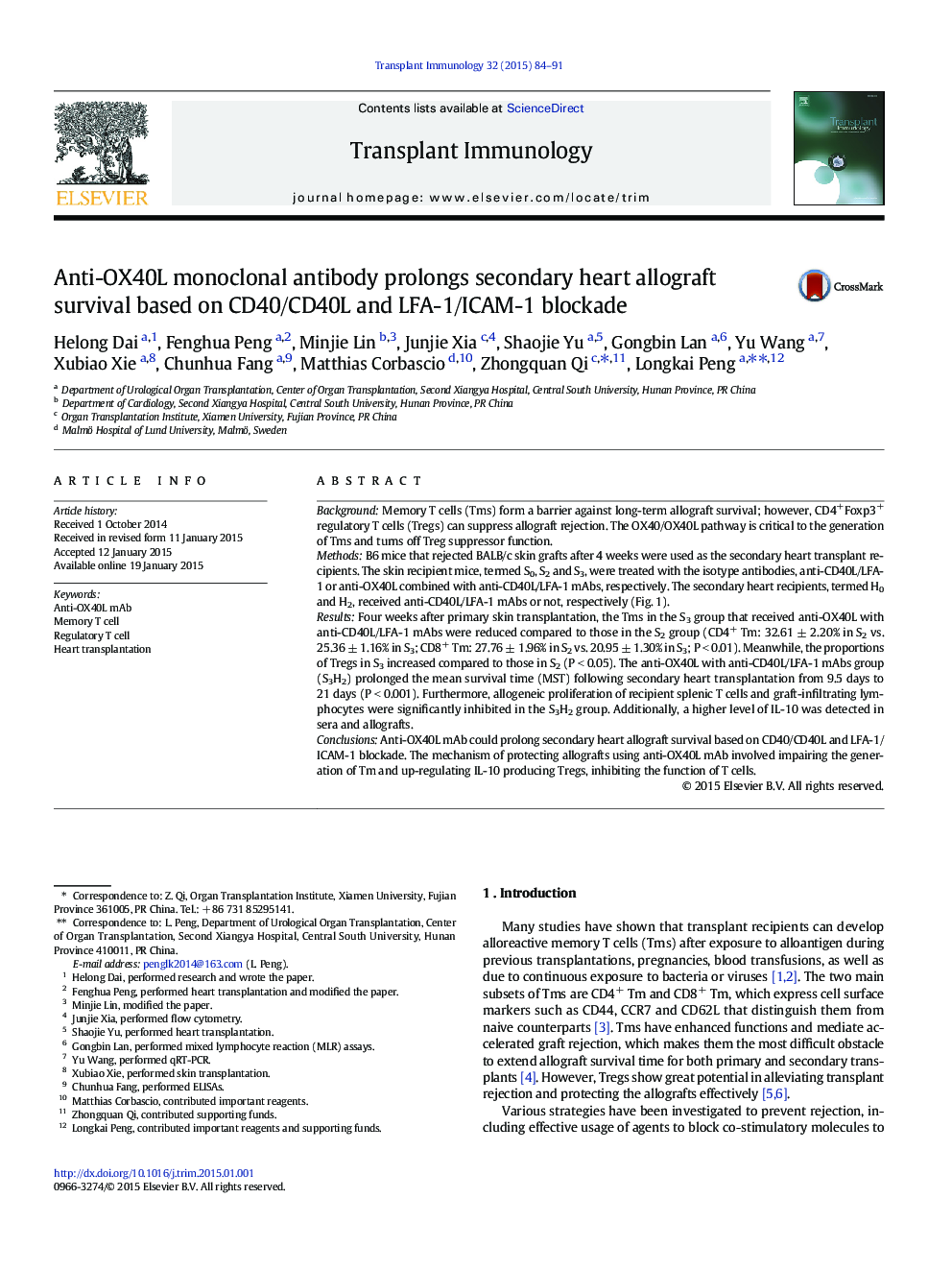| کد مقاله | کد نشریه | سال انتشار | مقاله انگلیسی | نسخه تمام متن |
|---|---|---|---|---|
| 3392059 | 1221187 | 2015 | 8 صفحه PDF | دانلود رایگان |

• Anti-OX40L combination anti-CD40L/LFA-1 prolongs secondary allograft survival.
• We explore the mechanism of prolonged secondary heart grafts survival as follows.
• Additional use of anti-OX40L prevented the generation of CD4+ Tm and CD8+ Tm.
• The up-regulated IL-10-producing Tregs may play a protective role in the allografts.
• The response of T cells, and infiltrating CD8+ T cells into grafts were inhibited.
BackgroundMemory T cells (Tms) form a barrier against long-term allograft survival; however, CD4+Foxp3+ regulatory T cells (Tregs) can suppress allograft rejection. The OX40/OX40L pathway is critical to the generation of Tms and turns off Treg suppressor function.MethodsB6 mice that rejected BALB/c skin grafts after 4 weeks were used as the secondary heart transplant recipients. The skin recipient mice, termed S0, S2 and S3, were treated with the isotype antibodies, anti-CD40L/LFA-1 or anti-OX40L combined with anti-CD40L/LFA-1 mAbs, respectively. The secondary heart recipients, termed H0 and H2, received anti-CD40L/LFA-1 mAbs or not, respectively (Fig. 1).ResultsFour weeks after primary skin transplantation, the Tms in the S3 group that received anti-OX40L with anti-CD40L/LFA-1 mAbs were reduced compared to those in the S2 group (CD4+ Tm: 32.61 ± 2.20% in S2 vs. 25.36 ± 1.16% in S3; CD8+ Tm: 27.76 ± 1.96% in S2 vs. 20.95 ± 1.30% in S3; P < 0.01). Meanwhile, the proportions of Tregs in S3 increased compared to those in S2 (P < 0.05). The anti-OX40L with anti-CD40L/LFA-1 mAbs group (S3H2) prolonged the mean survival time (MST) following secondary heart transplantation from 9.5 days to 21 days (P < 0.001). Furthermore, allogeneic proliferation of recipient splenic T cells and graft-infiltrating lymphocytes were significantly inhibited in the S3H2 group. Additionally, a higher level of IL-10 was detected in sera and allografts.ConclusionsAnti-OX40L mAb could prolong secondary heart allograft survival based on CD40/CD40L and LFA-1/ICAM-1 blockade. The mechanism of protecting allografts using anti-OX40L mAb involved impairing the generation of Tm and up-regulating IL-10 producing Tregs, inhibiting the function of T cells.
Journal: Transplant Immunology - Volume 32, Issue 2, March 2015, Pages 84–91